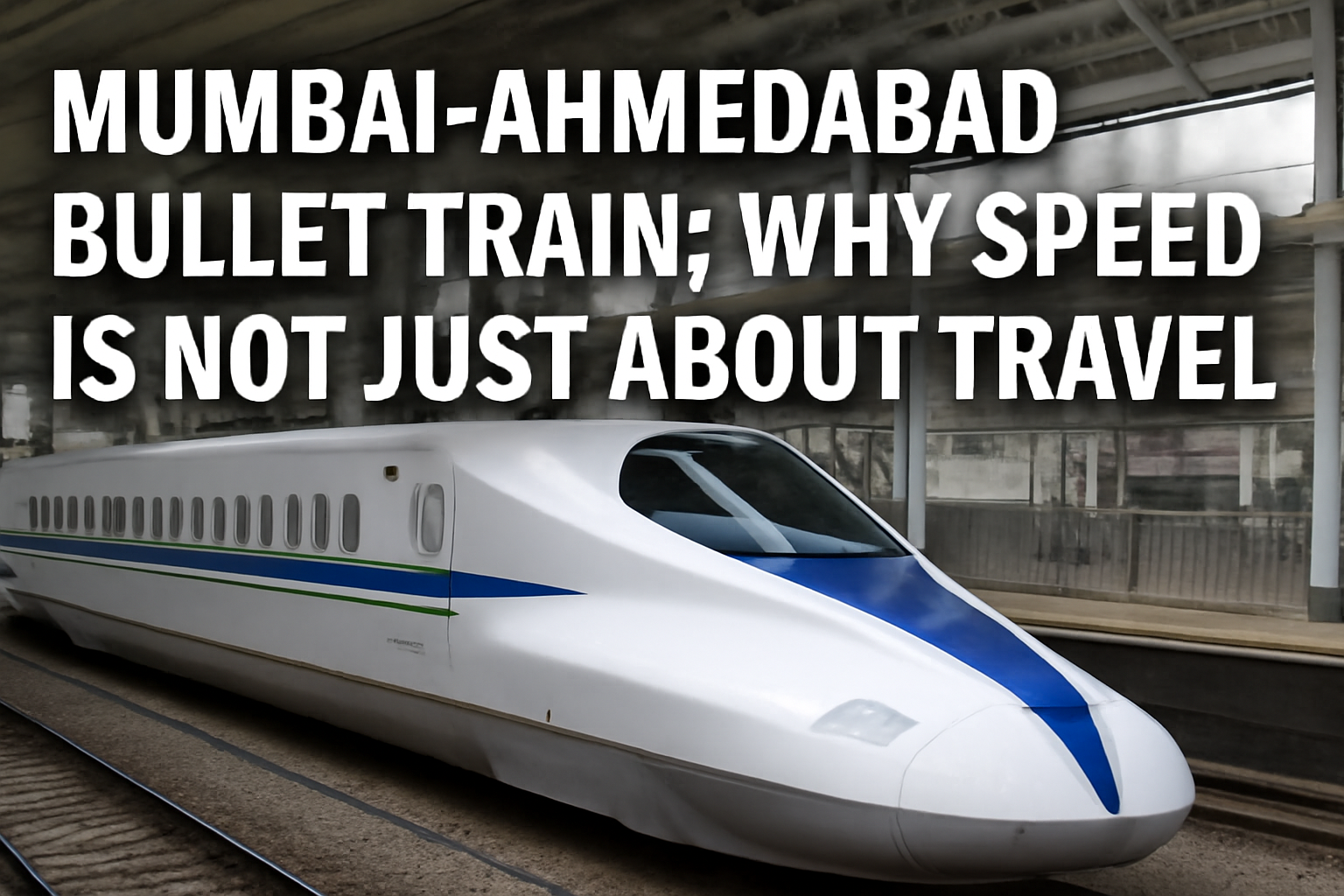
Mumbai-Ahmedabad Bullet Train: Why Speed Is Not Just About Travel
India’s first bullet train is more than a railway project. It is a signal of intent. The Mumbai-Ahmedabad high-speed corridor—508 kilometres, 12 stations, Japanese Shinkansen technology—will soon shrink a journey that now takes seven hours by road into just a little over two hours. But the real story is not about trains running at 320 kmph. It is about what India chooses to optimise for: time, trust, and technology.
More Than Steel and Concrete
The Ministry of Railways recently announced that the 12 modern stations along the route are close to completion. Each station blends local cultural identity with eco-friendly design and advanced passenger facilities. This is not just cosmetic architecture—it is India rethinking infrastructure as a holistic experience rather than a bare-bones utility. When infrastructure is aspirational, it fuels both pride and productivity.
Executed by the National High-Speed Rail Corporation Ltd (NHSRCL) with Japanese support, the project introduces Shinkansen-style travel to India. That means not just faster trains but also obsessive safety standards, punctuality measured in seconds, and service discipline. In a country where train delays are often measured in hours, this represents a culture shift.
Time as the New Currency
The bullet train will connect eight stations in Gujarat—including Surat, Vadodara, and Ahmedabad—and four in Maharashtra, passing briefly through Dadra & Nagar Haveli. Limited-stop services will complete the journey in 2 hours and 7 minutes; all-stops services will take 2 hours and 58 minutes.
The larger question is not whether passengers are willing to pay fares between ₹3,000 and ₹5,000. It is whether we finally recognise that time is the most precious currency of a modern economy. For business travellers, students, and even tourists, compressing a 7-hour ordeal into a 2-hour glide is a productivity dividend that compounds daily.
A Benchmark for Indian Infrastructure
India has struggled with what economists call the “execution deficit.” Grand announcements are often diluted by poor delivery. The bullet train project—criticised for delays, land acquisition hurdles, and cost overruns—has therefore become a litmus test. If India can deliver Shinkansen-level reliability, it will redefine what citizens expect from public infrastructure.
Critics argue that the fares put the service out of reach for the average traveller. But that is missing the forest for the trees. Premium projects often start by serving a narrower segment, then expand as costs fall and technology diffuses. Think of air travel: once a luxury, now accessible to millions. The bullet train will likely follow the same curve.
Why It Matters
India is urbanising, industrialising, and aspiring simultaneously. Transport is not just about moving people; it is about stitching together labour markets, supply chains, and ideas. By making Mumbai and Ahmedabad “two hours apart,” the corridor effectively redraws the map of western India. It creates one labour market, one education hub, one tourism circuit.
As Union Railway Minister hinted, operations will begin “very soon.” When that happens, India won’t just get a new train. It will get a new imagination of what is possible.
The Mumbai-Ahmedabad bullet train is therefore not only about velocity on tracks. It is about velocity in governance, in execution, and in ambition. Because countries that move fast in the 21st century will not just count their GDP—they will count the hours they save.




